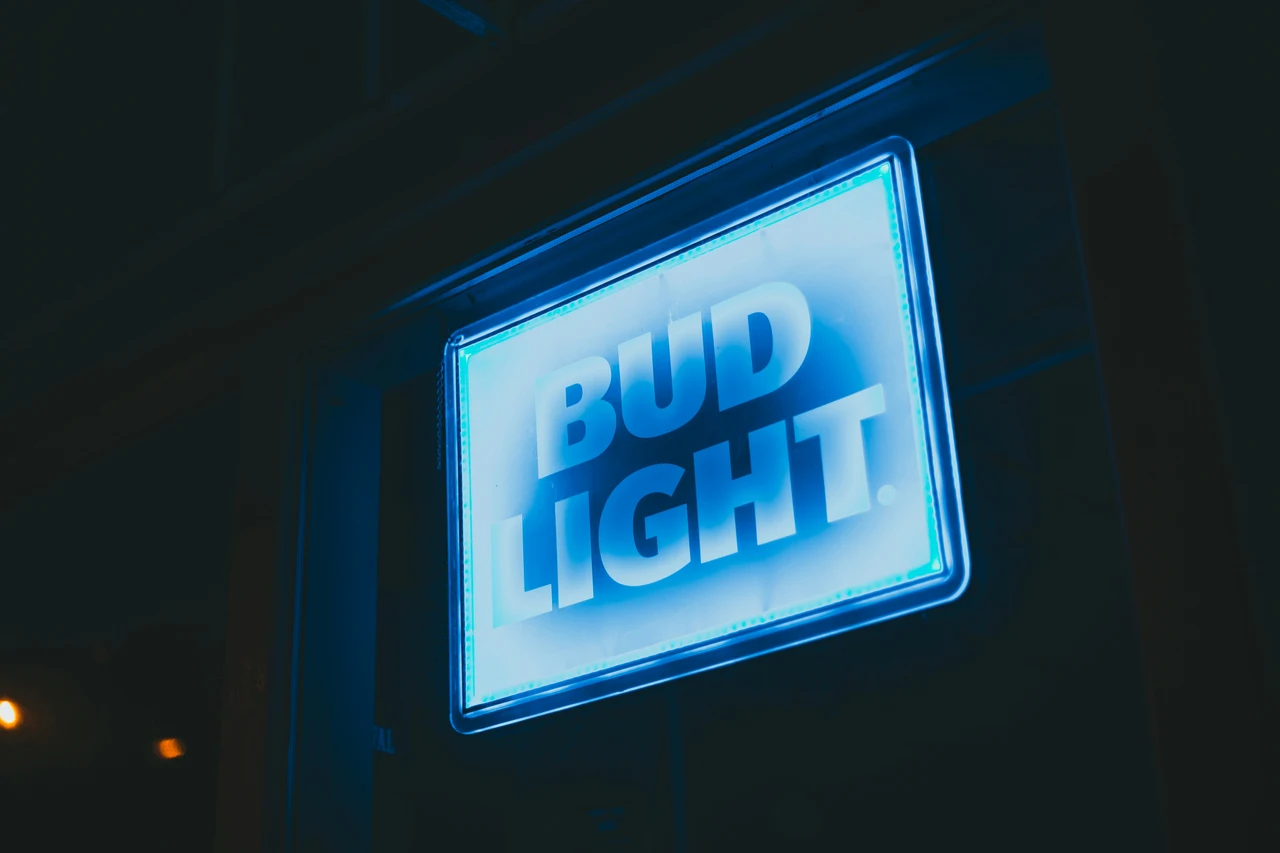Is Bud Light Any Good?
Hey beer lovers, Jeff here, and today we're diving into what might be the most polarizing topic in the beer world: Bud Light. Now, before you start typing angry comments or planning your exit strategy, hear me out. I'm going to give you my honest, unfiltered opinion on this ubiquitous light beer, and spoiler alert – it's complicated.
Let me start with my bottom line, because I know some of you just want the TL;DR version: Bud Light isn't very good beer. There, I said it. But – and this is a big but – there are times and places where it absolutely serves its purpose, and if someone's buying, I'm not turning it down. Sometimes the best beer is free beer, and that's not just my wallet talking.
What We're Actually Dealing With Here
Before we get into the nitty-gritty, let's establish what Bud Light actually is. It's an American light lager that clocks in at 4.2% ABV, brewed by Anheuser-Busch (now owned by AB InBev). It's made with rice as an adjunct grain alongside barley malt, which gives it that characteristic light body and clean finish. It's also the best-selling beer in America, which means millions of people are drinking it regularly.
Now, popularity doesn't equal quality – we all know that. But it does mean something. You don't become the number one beer in the country by accident, even if that success is built more on marketing muscle and distribution power than brewing excellence.
The Case Against Bud Light (Or: Why Craft Beer Snobs Have a Point)
Let's start with the criticisms, because they're legitimate. From a pure beer quality standpoint, Bud Light is pretty underwhelming. The flavor profile is essentially water with a hint of grain sweetness and just enough hop character to remind you that you're technically drinking beer. It's not offensive, but it's not particularly interesting either.
The aroma is virtually nonexistent. Pour a Bud Light into a glass, and you're not going to get those beautiful hop aromas that make your mouth water, or the rich malt complexity that draws you in for that first sip. What you get is... well, not much. It smells like cold and maybe a whisper of grain if you really concentrate.
The mouthfeel is thin and watery, which is by design but doesn't make for an engaging drinking experience. There's no body to it, no texture that makes you want to savor each sip. It goes down easy, sure, but so does water, and water doesn't pretend to be beer.
From a brewing perspective, Bud Light represents everything that craft beer lovers rebelled against. It's mass-produced, focuses on consistency over character, and uses adjunct grains primarily to cut costs rather than add interesting flavors. It's the McDonald's of beer – reliable, ubiquitous, and thoroughly mediocre.
The Ingredients Tell a Story
When you look at what goes into Bud Light, you start to understand why it tastes the way it does. The use of rice as an adjunct isn't necessarily bad – some great beers use rice – but in Bud Light's case, it's primarily used to lighten the body and reduce costs. Rice ferments more completely than barley, leaving less residual sweetness and body.
The hop character is minimal, just enough to provide basic balance and prevent the beer from being cloyingly sweet. We're talking about subtle bitterness levels here, nothing that's going to challenge your palate or provide interesting flavor complexity.
The water treatment and brewing process are designed for maximum efficiency and consistency. Every Bud Light you drink, whether it's in Maine or California, is going to taste virtually identical. That's actually impressive from a technical standpoint, but it also means there's no room for the happy accidents and regional variations that make beer interesting.
Where Bud Light Actually Works
Now, here's where I'm going to surprise you – there are legitimate situations where Bud Light is actually the right choice. I know, I know, it pains me to admit it too, but context matters in beer just like everything else.
Hot weather and physical activity: When you're working in the yard on a 95-degree day, or you've just finished a long hike, sometimes you don't want a complex imperial stout. You want something cold, refreshing, and easy to drink. Bud Light's light body and high carbonation actually work in its favor here. It's hydrating without being heavy.
Social situations with mixed crowds: Not everyone at your backyard barbecue is going to appreciate your favorite double IPA. When you're hosting a diverse group of people with different beer preferences, having some Bud Light on hand ensures everyone can find something they'll drink. It's the common denominator beer.
Budget constraints: Look, craft beer is expensive. A six-pack of quality craft beer can cost what a 12-pack of Bud Light costs. If you're throwing a party for 50 people or stocking beer for a week-long camping trip, the economics start to matter. Sometimes you need volume over quality.
Pairing with certain foods: This might be controversial, but Bud Light can actually work with certain foods. Spicy Mexican food, greasy bar food, or simple grilled burgers – sometimes you want a beer that won't compete with the food but will help cleanse your palate between bites.
The Free Beer Philosophy
Here's where my "it's not good unless it's free" philosophy comes in. When someone else is buying, the quality equation changes completely. Free Bud Light tastes infinitely better than expensive Bud Light because the value proposition is entirely different.
There's something to be said for not being precious about beer all the time. If I'm at a wedding, company party, or friend's house, and they hand me a Bud Light, I'm going to drink it and enjoy the social aspect of sharing a beer with people I care about. The beer isn't the point in those situations – the company is.
Plus, there's a certain blue-collar authenticity to drinking whatever's available without complaint. Some of my best beer-drinking memories involve terrible beer but great company. Sometimes being the guy who turns down a offered beer because it's not craft enough makes you the problem, not the beer.
The Marketing Machine
You can't talk about Bud Light without acknowledging the incredible marketing machine behind it. Love it or hate it, Anheuser-Busch knows how to sell beer. Their advertising has become part of American culture – from the Budweiser Clydesdales to "Wassup!" to more recent campaigns.
This marketing success is part of why craft beer enthusiasts react so strongly against Bud Light. It's not just about the beer itself; it's about what it represents. When you see the massive advertising budgets and market dominance, it can feel like marketing triumph over substance, style over quality.
But here's the thing – that marketing works because it taps into something real. The idea of beer as a social lubricant, as part of American traditions, as something that brings people together regardless of their differences. Bud Light's marketing might be manipulative, but it's not entirely wrong about beer's role in social situations.
Technical Brewing Assessment
From a technical brewing standpoint, Bud Light is actually well-made for what it is. It's consistent, it's clean, and it has no off-flavors or brewing defects. The problem isn't that it's poorly brewed – it's that it's boring.
The brewing process is highly controlled and standardized. Quality control is rigorous, and the beer hits its target specifications batch after batch. If you judge it purely on technical execution rather than flavor complexity, it's actually quite good at being exactly what it's trying to be.
That said, being technically proficient at making boring beer isn't particularly impressive when you consider what small craft breweries accomplish with a fraction of the resources. The technical capabilities are there; they're just being used to create something aggressively unremarkable.
The Craft Beer Snob Problem
Here's where I'm going to call out some of my fellow beer enthusiasts – the automatic dismissal of Bud Light sometimes says more about beer snobbery than it does about the beer itself. Yes, it's not complex or interesting, but that doesn't mean everyone who drinks it is wrong or has bad taste.
Some people genuinely prefer lighter, less flavorful beers. Some people don't want to think about what they're drinking; they want something familiar and easy. Some people grew up drinking light lagers and that's their comfort zone. None of these preferences are wrong, even if they're not interesting to those of us who love exploring different beer styles.
The craft beer community can sometimes be unwelcoming to people who don't share our enthusiasm for hop bombs and barrel-aged experiments. If we want beer culture to grow and thrive, we need to meet people where they are, not shame them for their preferences.
Regional and Cultural Context
It's worth noting that Bud Light's popularity isn't uniform across the country. In some regions and communities, it's deeply embedded in local culture and traditions. Dismissing it entirely means dismissing part of American beer culture, even if it's not the part we're most excited about.
In working-class communities, at sporting events, at certain types of social gatherings, Bud Light isn't just a beer choice – it's a cultural marker. Understanding this context doesn't mean you have to love the beer, but it does mean recognizing its role in broader beer culture.
The Gateway Beer Theory
Here's an interesting angle – Bud Light might actually serve as a gateway beer for some people. If someone starts with Bud Light and then gets curious about other beer styles, that's a win for beer culture overall. Not everyone starts their beer journey with a double IPA; some people need to work their way up to more complex flavors.
I've met people who started with light lagers and eventually developed sophisticated palates for craft beer. The progression from Bud Light to craft beer isn't automatic, but it does happen, and dismissing light lager drinkers entirely means missing opportunities to share the passion for better beer.
My Final Verdict
So, is Bud Light any good? By the standards I apply to most beer, no, it's not particularly good. It's bland, uninteresting, and represents missed opportunities for flavor and complexity. If I'm spending my own money and have other options available, I'm probably not choosing Bud Light.
But is it actively bad? Also no. It's clean, consistent, and serves its intended purpose. In the right context – hot weather, casual social situations, budget constraints, or when someone else is buying – it can be perfectly adequate.
The key is having appropriate expectations. If you expect Bud Light to deliver complex flavors and an engaging drinking experience, you're going to be disappointed. If you expect it to be cold, refreshing, and inoffensive, it delivers on those modest goals.
The Bigger Picture
At the end of the day, beer is about more than just flavor profiles and brewing techniques. It's about social connections, cultural traditions, and personal enjoyment. Bud Light might not be my first choice, but it's part of the beer landscape, and it serves a purpose for millions of people.
My advice? Don't feel guilty about drinking Bud Light if that's what you enjoy or what the situation calls for. But also don't settle for it if you're genuinely interested in exploring what beer can be. There's room in the world for both mass-market lagers and innovative craft beer.
And remember – sometimes the best beer really is free beer, regardless of what the label says. Cheers to that, at least.

